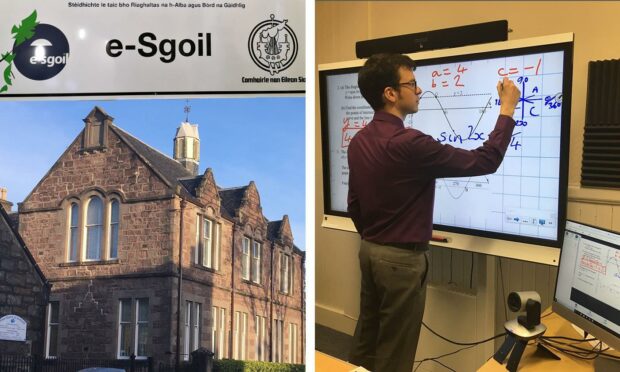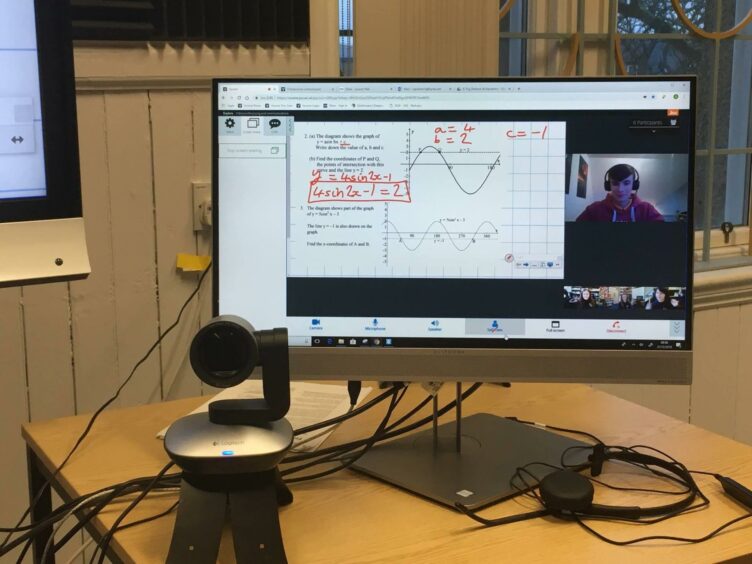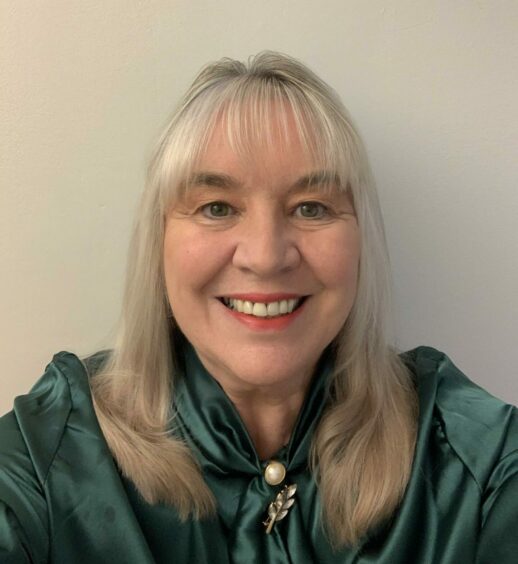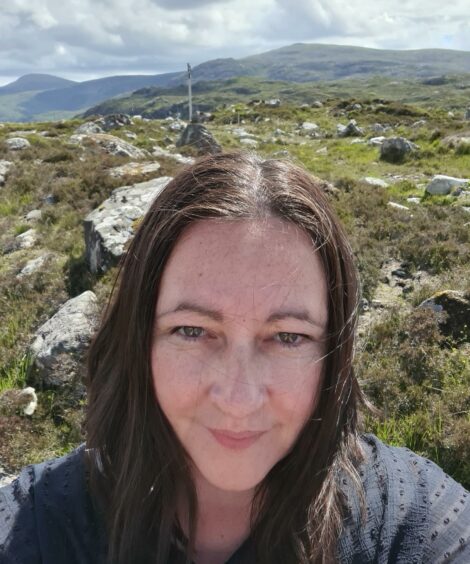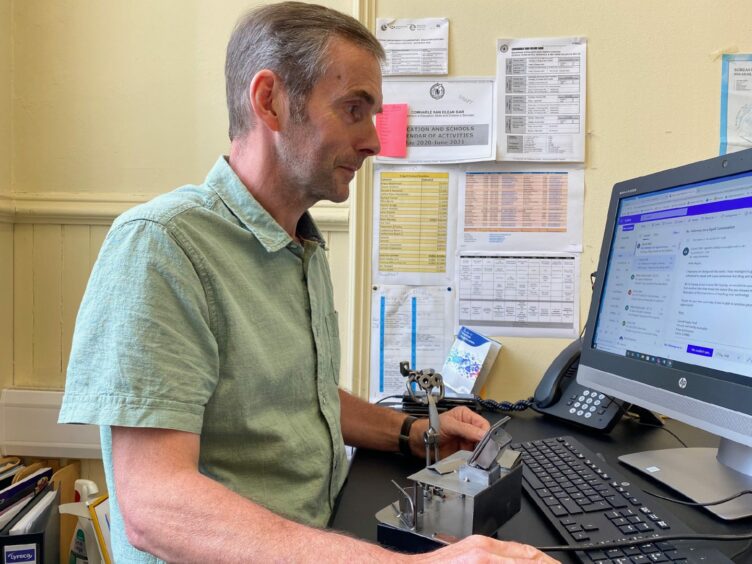How do you teach children who are too anxious to leave the house?
An innovative digital learning school which began in the Western Isles has shown how.
Stornoway-based e-Sgoil was launched in 2017 to connect schools spread across the Western Isles. It allowed students access to learning opportunities they couldn’t get where they live.
However, the arrival of Covid and the ensuing lockdown showed the ‘vital’ need for online schooling, with e-Sgoil now using teachers from across the eight northern council areas that make up the Northern Alliance, from Shetland to Aberdeen, the Western Isles to Moray. Pupils from all over Scotland take part in lessons.
It has led to other initiatives, such as the Highland Online Primary School (HOPS), which has proven handy for Covid-positive families who’ve had to isolate at home.
‘It’s a real school, not a pretend school’
Kim Hall teaches English, Spanish, and enterprise and employability for e-Sgoil from her home in Ellon, Aberdeenshire.
“During lockdown it became vital,” she said.
“It meant we could run lessons online for all students who were not in school. It was a lifeline for them.
“E-Sgoil is totally online, but it’s not a virtual school. It’s a real school, it’s not a pretend school. Lessons are live, and students can join in.”
Even now that the pandemic is easing and students have long since returned to school, not all pupils are ready for the classroom environment.
Responding to the mental health crisis
One group for whom e-Sgoil serves as an educational lifeline is so-called ‘interrupted learners’.
These are children who have been out of school, some of them since Primary One, and often for quite a few years.
There are several different reasons for interrupted learners but a key one is anxiety and mental health issues.
E-Sgoil is now working with hundreds of such children every day, under their so-called ‘i-Sgoil’ programme.
Some children haven’t been outside in more than a year
“Many of them have not left the house in 12 months or even longer, such is their anxiety,” said Mrs Hall.
“These young people are basically terrified when they first start working with i-Sgoil teachers, because they’ve not been around teachers for so long. It takes a lot of nurturing.
“They are often very, very able and bright. But they’ve been kind of left to the side, in limbo, because there’s not been a suitable placement for them. They’ve not been attending school, but the school valiantly continues to send work home, which may or may not get done. But these young people just do not want contact with school.
“It can be very difficult to understand, from a mainstream school perspective. But i-Sgoil has had a lot of success, and many are now attending classes.
‘One girl was too nervous to write in the chat function’
“Some children wouldn’t even speak into the audio, never mind be on camera.
“I had one young lady who wouldn’t even write in the chat function. She would e-mail because she was so nervous about anyone else even seeing her writing.
“So to get from that point to be able to speak on camera to others is a long journey. But it’s one that creates a lot of positivity and self-confidence, and it can be life-changing for them.
“It means that they have the opportunity to do the qualifications and have the wider experiences that other young people have in school.”
‘You’ve got to capture their attention in the first few minutes’
Not being in the classroom with her students only adds to the importance of getting through to them in other ways.
“Before lessons start, I’ll have checked that all my Powerpoints are good to go and that all the links in them are working. Sometimes you get glitches and it’s important to get them ironed out.
“I’m constantly tweaking and improving things, adding a picture here and a visual there. You’ve got to capture their attention in the first few minutes of a lesson, otherwise they’ll just switch off.”
Mrs Hall describes her average day as ‘crazy and fast-paced’, but wouldn’t have it any other way.
“It’s about giving them the self-belief that, yes, they can actually do this. At the start, many of them don’t think they can, they don’t think they’ll be able to do exam work.
“This way of learning has been enormously successful in giving them that self-belief, just by doing things a little bit at a time. It becomes possible.”
Taking Gaelic to the mainland
Appropriately for an initiative with a Gaelic name and Western Isles roots, Gaelic is taught widely at e-Sgoil.
Based on the Isle of Harris in the Western Isles, Annchris Maclean teaches the language to students all over Scotland.
“E-Sgoil was brought to a lot of people’s attention during lockdown,” she said.
“We had a massive uptake, so kids could continue doing Gaelic, particularly if there was no Gaelic in the home.”
Life as an e-Sgoil teacher suits Mrs Maclean “brilliantly”, as a single mum with two kids.
“It means I can work my school day around my own kids. I get them up, get them off to school, and then sit at my computer ready for my first lesson at 9am.
“My lessons are in half-hour blocks. I see different children from different schools every day. And it might be a cliché, but no day is ever the same for me. Every time I leave the screen, I come back to different children.
“My day will finish between 3.30pm and 4pm, it depends on when the individual schools I’m working with finish their day – I’m effectively a teacher for that school on that day. When my day finishes I then do everything I’d do in a normal school setting, looking at kids’ work that day and planning for the next.”
‘I get far too excited’
She added: “The high point of the day for me is actually just seeing the kids. I absolutely adore seeing all the little faces that come on my screen, and how different they are.
“We all know that every child’s ability is different, but I love seeing the little successes. They don’t have to be huge ones, even a child who has recognised a phonic for the first time, or gained an insight into some part of maths that they could never do before.
“Just seeing their faces, the excitement they get from realising that they can actually do this, and that I’ve been there to help them do it, is just a really fab feeling.
“They get so excited about their own successes, and I think I get far too excited myself – I jump up and I shout and I clap, and I get really into it. But they love my enthusiasm as much as I love theirs.”
Being online, the biggest challenge for e-Sgoil teachers is often technology itself.
“Today, for example, I had one school and the internet just kept dropping out. It doesn’t happen very often but when it does it affects the day as a whole.”
An Orkney education boss revealed last year that unreliable internet access had left him struggling to keep pupils connected during the pandemic.
In or out of the classroom, ‘a teacher’s life is not easy’
Despite being an online school, the e-Sgoil teachers described an average day that mirrors any other teacher’s, the only major difference being the lack of a physical classroom.
That goes for the common misconceptions about a teacher’s day as well.
“We don’t actually get as many breaks as people think we do,” said Mrs Maclean.
“There’s the old adage that our day begins at 9am and ends at 3pm, but we all know it doesn’t.
“A teacher’s life is not that easy.”
From ‘chief sceptic’ to e-Sgoil head teacher
Five years ago, when Angus Maclennan was asked to be head teacher at e-Sgoil, he suspected a mistake. The self-described ‘chief sceptic’ had little experience or interest in technology.
But former Western Isles education boss Bernard Chisholm finally wore him down. Now, after five years as head teacher, Mr Maclennan sees the error of his ways.
“[Mr Chisholm’s] take on it was that this is not about technology. I think that view has been proven right all along. Yes, of course you have to have the network. But you can be agnostic as far as the technology is concerned.
“It’s about good quality learning and teaching. If e-Sgoil is a dartboard, the bullseye is equity of learning.”
More from the Schools and Family team
Masks to be encouraged but not required in schools
Is your school full? Use our searchable tables to find out
When should my child start doing chores? When they’re two, say experts
